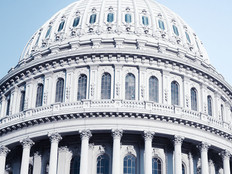Tools to Bridge the Digital Divide
Networking technology companies have stepped up to the plate to ensure critical communications can be handled smoothly during this unprecedented time.
Cisco Systems CEO Chuck Robbins says in a recent letter that the company has “been closely engaging with heads of state and government agencies to support policies that keep their economies, medical professionals, and schools productive while ensuring public safety.”
Cisco’s tactical operations unit stands ready to help in the event of emergencies, helping first responders, enabling continuity of government networks as state and local agencies respond to the pandemic, and ensuring connectivity for hospitals, utilities and other essential services that communities depend on.
And in March, Cisco expanded the capabilities on its free Webex offer in all countries where it is available, including unlimited usage, support for up to 100 participants and other features.
County governments and ISPs such as AT&T are stepping in to provide connectivity to students who need it to complete online coursework. For example, Ohio’s Cuyahoga County donated 300 hotspots to the Cleveland Metropolitan School District to distribute to students without internet access, and the county worked with AT&T to provide free Wi-Fi access for about two months to the hotspots, local TV station WOIO reports.
MORE FROM STATETECH: Find out how 5G network slicing technology can benefit public safety.
Network Connectivity for First Responders
AT&T’s network is also the backbone of the First Responder Network Authority, or FirstNet, the nation’s interoperable public safety broadband communications network, which now connects more than 11,000 public safety agencies and organizations, accounting for over 1.2 million connections.
“We’ve answered the call for tornadoes, hurricanes, wildfires, floods and other natural disasters,” Jason Porter, senior vice president of the FirstNet Program at AT&T, says in a blog post. “But with COVID-19, it is like experiencing a perpetual emergency in every community across the country. Public safety’s network is being tested in a completely new way, and it’s hitting the mark.”
FirstNet’s network is being used to support connectivity at a medical facility in Northern California, network interoperability at a drive-through testing facility in the Northeast and network support for a quarantine center at a military base in Texas.
Meanwhile, Verizon says it has deployed portable cell sites to provide additional network coverage at emergency operations centers, coronavirus mobile testing sites and quarantine areas in Arizona, California, Georgia, New York, South Carolina, Texas and Washington state.
The Verizon Response Team, which continuously supports governments and nonprofits, has been activated and is currently leading more than 120 engagements in the U.S. with portable cell sites, Wi-Fi hotspots, free charging stations and other devices for agencies responding to the pandemic.
This article is part of StateTech's CITizen blog series. Please join the discussion on Twitter by using the #StateLocalIT hashtag.












